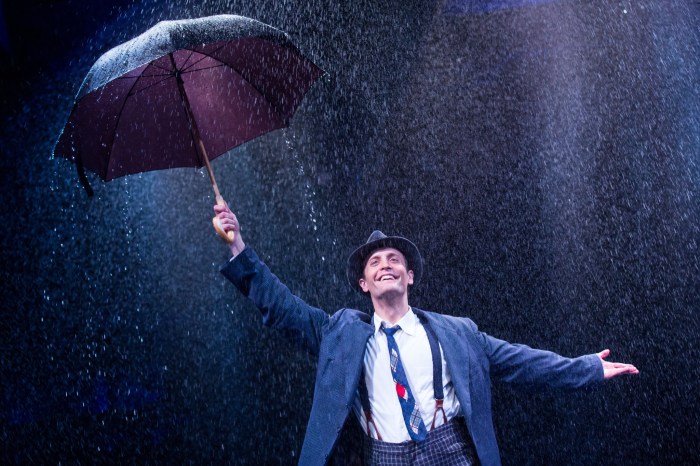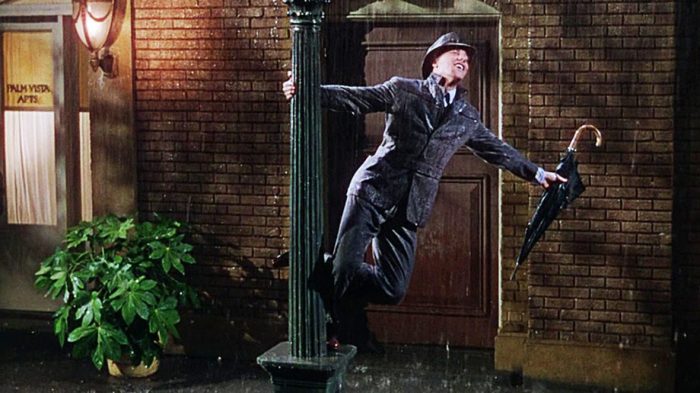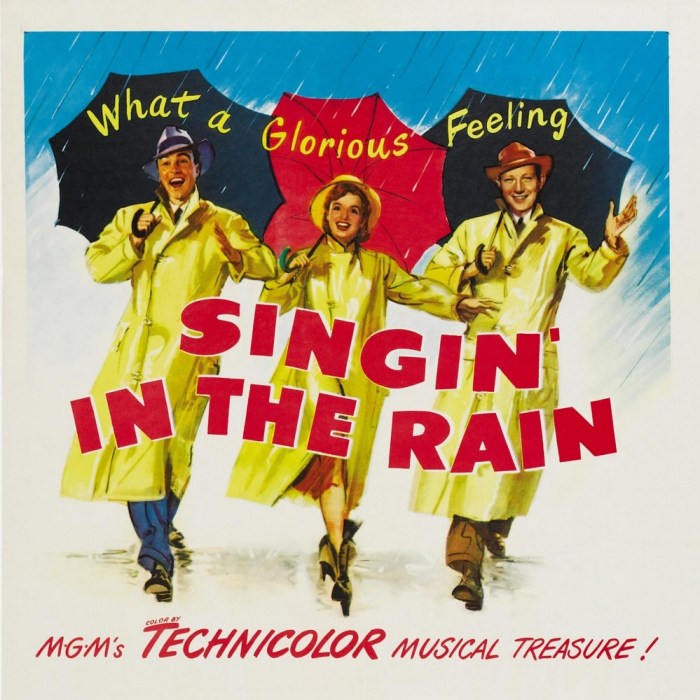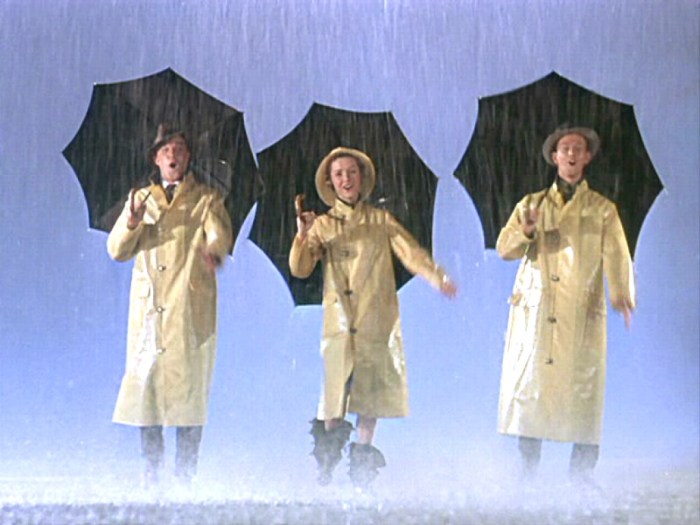UMD Singing in the Rain, a cinematic masterpiece, takes center stage in this captivating exploration. From its historical significance to its enduring cultural impact, this beloved film continues to enchant audiences with its timeless charm and groundbreaking artistry.
Delve into the film’s musical brilliance, iconic dance sequences, and profound cultural influence as we unravel the secrets that make UMD Singing in the Rain a cinematic triumph.
Historical Context

“Singin’ in the Rain” is an iconic musical film released in 1952, during the Golden Age of Hollywood musicals. It marked a significant milestone in the evolution of the genre, showcasing innovative storytelling, memorable songs, and groundbreaking dance sequences.
The film’s success had a profound impact on the careers of its key players. Gene Kelly, who co-directed and starred in the film, solidified his status as one of the greatest dancers and choreographers in cinema history. Stanley Donen, who co-directed with Kelly, went on to become a renowned director in his own right, helming classics such as “Funny Face” and “Charade.”
Debbie Reynolds, who played the female lead, became a Hollywood star and continued to captivate audiences with her performances in subsequent films.
Gene Kelly’s Contribution
- Kelly’s groundbreaking dance sequences in “Singin’ in the Rain” revolutionized musical choreography. His athleticism, grace, and impeccable timing created unforgettable moments on screen.
- The film’s signature song, “Singin’ in the Rain,” features Kelly’s iconic dance routine in the rain. The sequence is widely regarded as one of the most iconic and exhilarating dance numbers in cinema history.
- Kelly’s co-direction of the film demonstrated his versatility and artistic vision, showcasing his ability to blend technical brilliance with emotional depth.
Stanley Donen’s Contribution
- Donen’s co-direction brought a fresh perspective to the film, complementing Kelly’s technical prowess with a keen eye for storytelling and character development.
- Donen’s direction of the film’s musical numbers showcased his ability to create visually stunning and emotionally resonant sequences.
- Donen’s subsequent directorial work, including “Funny Face” and “Charade,” further cemented his reputation as a master of the musical genre.
Debbie Reynolds’ Contribution
- Reynolds’ portrayal of Kathy Selden brought charm, vulnerability, and a strong vocal performance to the film.
- Her chemistry with Gene Kelly was undeniable, creating a believable and endearing romantic pairing on screen.
- Reynolds’ success in “Singin’ in the Rain” launched her career as a leading lady and established her as a beloved Hollywood icon.
Musical Analysis

The film’s score, composed by Nacio Herb Brown and Arthur Freed, is an integral part of the narrative and emotional impact of “Singin’ in the Rain.” It seamlessly blends original songs with classical pieces, creating a rich and evocative soundscape that enhances the film’s themes and characters.
UMD singing in the rain brings joy and nostalgia. It’s like a magical experience, similar to discovering the ancient Chinese Lo Shu Magic Square in C++. The square’s harmonious arrangement of numbers evokes the same sense of wonder and delight as UMD’s heartfelt rendition of the iconic song.
Use of Songs
The film’s songs are not mere musical interludes but serve specific narrative and emotional purposes. “Singin’ in the Rain” captures the protagonist’s joy and optimism, while “Good Morning” conveys the camaraderie and playful nature of the characters. “Make ‘Em Laugh” explores the complexities of the entertainment industry and the sacrifices artists make to bring laughter to audiences.
Musical Style
Musically, “Singin’ in the Rain” is a blend of Broadway-style show tunes and Hollywood film scores. The songs feature catchy melodies, memorable lyrics, and elaborate dance sequences that showcase the performers’ talents. Compared to other musicals of the era, it has a more sophisticated and integrated score that seamlessly transitions between dialogue and song.
Cultural Impact

Singin’ in the Rainhas transcended its time to become a cultural phenomenon, celebrated and cherished to this day. Its enduring appeal and relevance continue to resonate with contemporary audiences, solidifying its place as a cinematic masterpiece.
Influence on Popular Culture, Umd singing in the rain
The film’s iconic status is evident in its widespread influence on popular culture. Its memorable songs, such as the title track and “Good Morning,” have become enduring standards, covered by countless artists and featured in countless films, television shows, and advertisements.
The film’s choreography, particularly the iconic “Singin’ in the Rain” sequence, has been widely imitated and parodied, becoming a cultural touchstone.
Enduring Appeal
Singin’ in the Rain‘s enduring appeal stems from its timeless themes and relatable characters. The film’s exploration of love, friendship, and the challenges of artistic expression resonates with audiences of all ages. Its optimistic and uplifting tone provides a sense of escapism and joy, making it a comforting and inspiring watch.
Relevance to Contemporary Audiences
Despite its age, Singin’ in the Rainremains relevant to contemporary audiences. Its themes of artistic integrity, the pursuit of dreams, and the power of resilience are as resonant today as they were in 1952. The film’s portrayal of the transition from silent to “talkie” films offers a historical perspective that allows audiences to appreciate the evolution of cinema.
Question & Answer Hub: Umd Singing In The Rain
When was UMD Singing in the Rain released?
1952
Who directed UMD Singing in the Rain?
Stanley Donen and Gene Kelly
Who starred in UMD Singing in the Rain?
Gene Kelly, Debbie Reynolds, and Donald O’Connor


